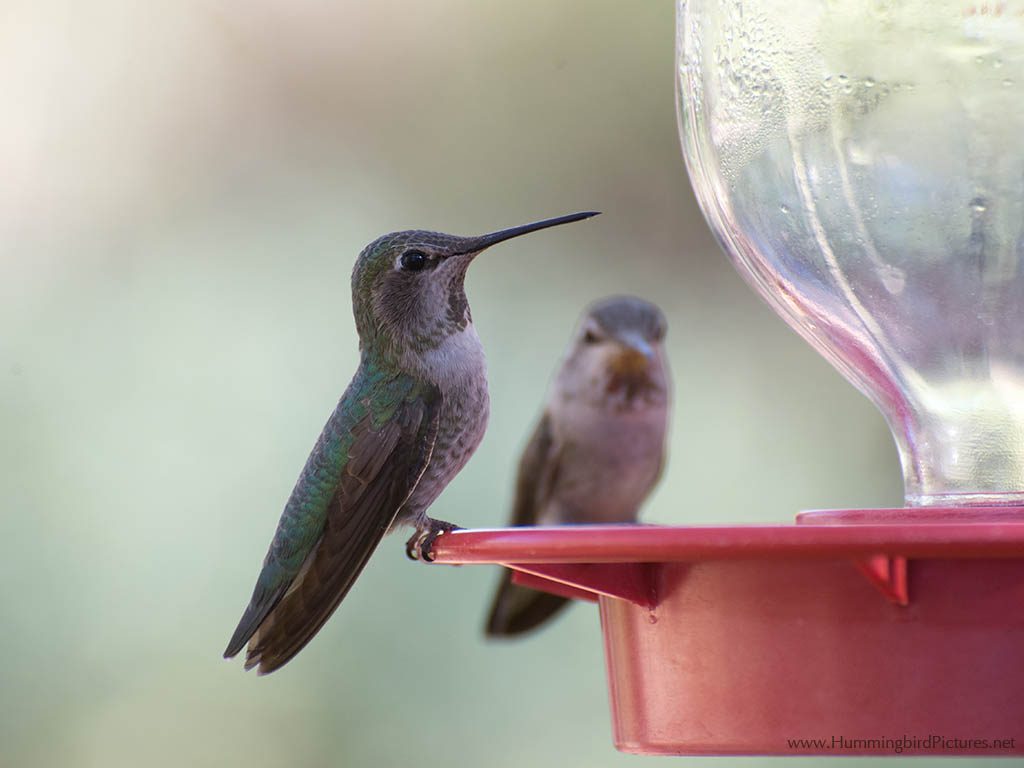
Hummingbird feeders do two things.
- They provide a reliable food source for the hummingbirds
- They bring the birds close enough for us to see
A hummingbird feeder can be a nice addition to a hummingbird garden. We started with hummingbird plants only. But when a hot spell hit during nesting season – and there was a nest in the yard – up went a feeder. We enjoyed the seeing the birds up close regularly, so we now keep a couple of small feeders up year round.
Different Hummingbird Feeders
There are many kinds of feeders. Different feeders work best under different circumstances. Some are beautiful, some are easy to clean, and some can feed many birds at once.
Hummingbird feeders come in two general styles.
Bottle style feeder
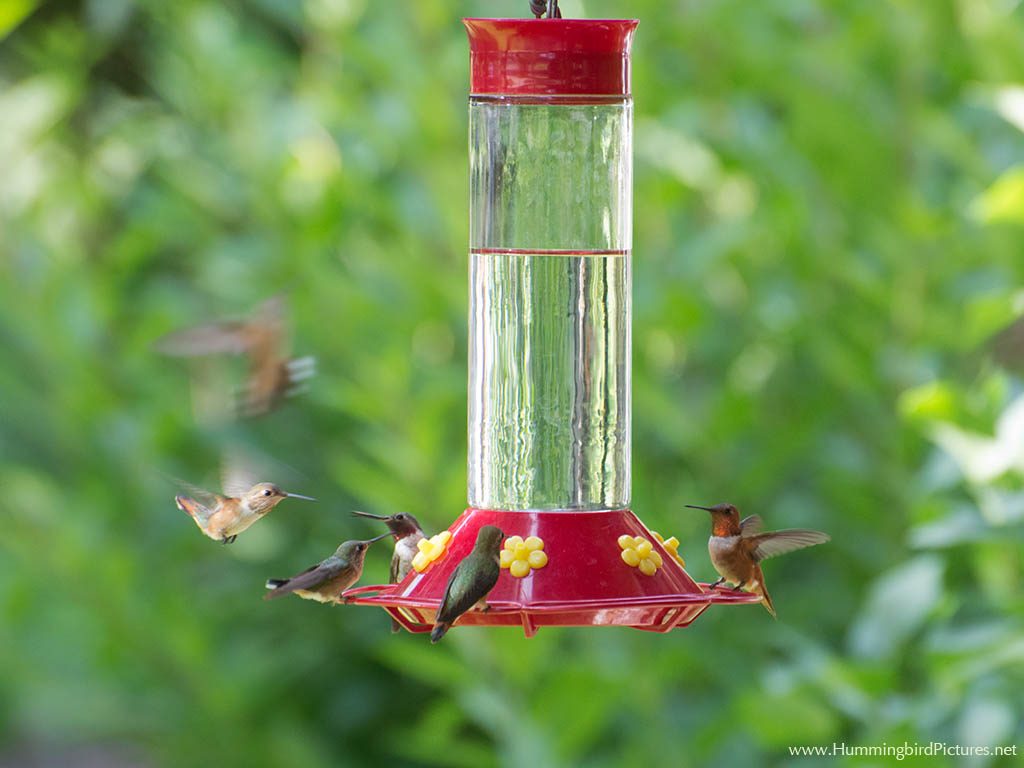
- An upside-down bottle holds the nectar (sugar water)
- Can hold large volume
- Can feed many birds
- Can be decorative, including handblown glass
Dish style feeder
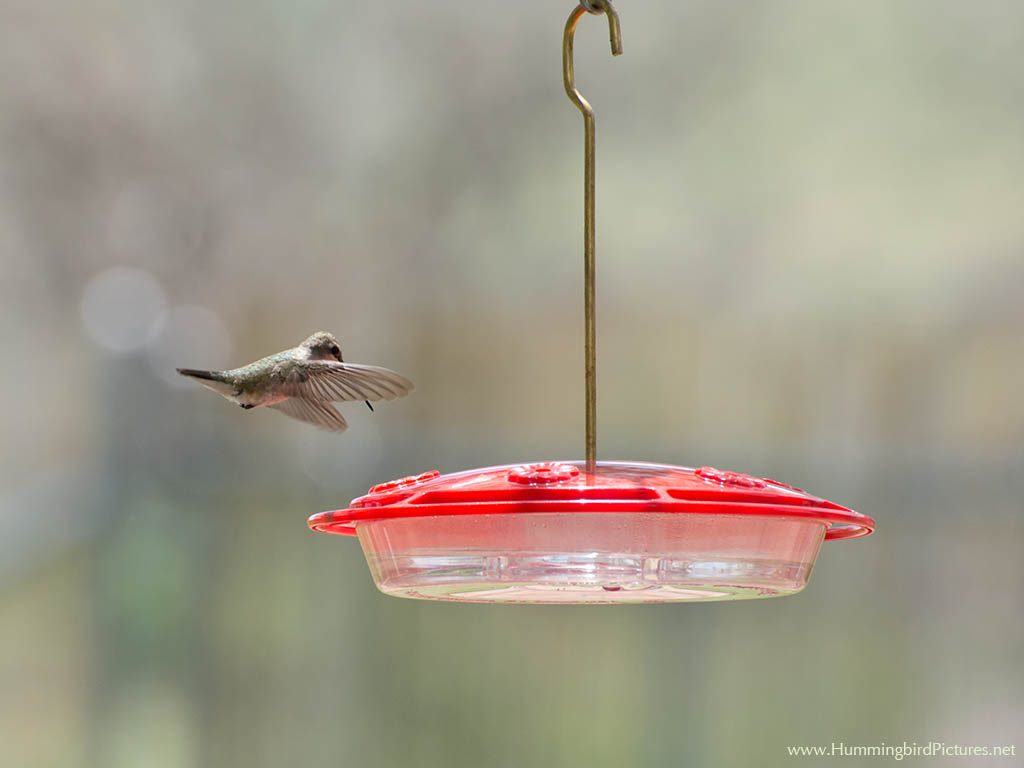
- A shallow bowl with a flat or domed lid holds the nectar
- Easy to see the birds as they feed
- Often easy to clean
Choosing a Hummingbird Feeder
Hummingbird feeders can be a little more day-to-day work than established hummingbird plants, but your system does not need to be elaborate.
If you decide to put out a hummingbird feeder, it is very important for the health of the birds that you maintain it. You must keep it free of mold and mildew. The nectar must be kept fresh and not cloudy.
Questions to consider when making a feeder selection
- Which model can I keep clean
- How often will I need to change out the nectar to keep it fresh
Weather will determine how often the nectar needs to be changed. Remember that nectar is a food and will spoil.
These basic questions will help you choose the style and size of your first hummingbird feeders.
Our Favorite Hummingbird Feeders
We have gone through a number of hummingbird feeders over the years.
Several small feeders, spaced around the garden, have worked better for us than one large feeder. A single hummingbird may try to claim a feeder as its territory. More feeders provide more food sources.
We also try to limit yellow on the feeders. Ant traps (or “moats”) are placed above each feeder. The moats keep ants from making their way down the wire and into the nectar.
Small Numbers, Several Small Feeders
Our favorites work well with our small number of hummingbirds and hot weather.
Single Feeders
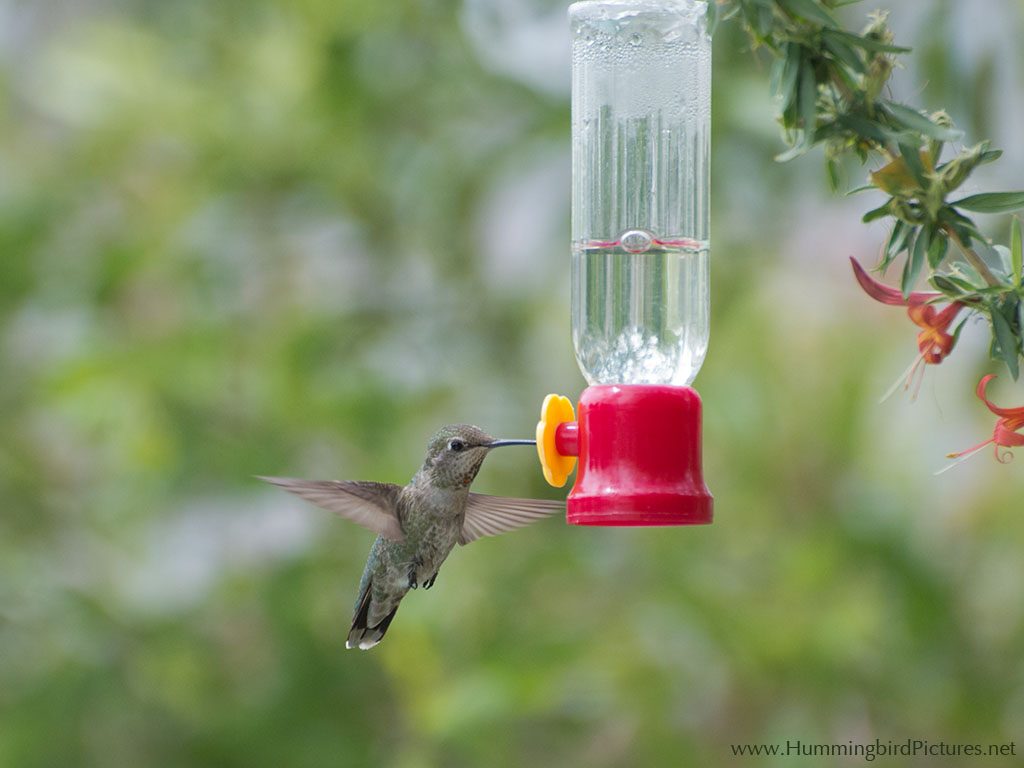
This small bottle feeder has a single port (hole). It holds a very small volume. During hot weather, the hummingbirds empty it within a couple of days. The fast turnover keeps the nectar from going bad in the heat.
A single port feeder is also fast to clean with a small bottle brush and a tiny port brush.
On occasion, bees or wasps have found the single feeders with the yellow flowers. We then take those feeders down for a few days and use the dish feeders in their place.
Small Dish Feeder
This small red dish feeder is another favorite. It holds a small volume of nectar.
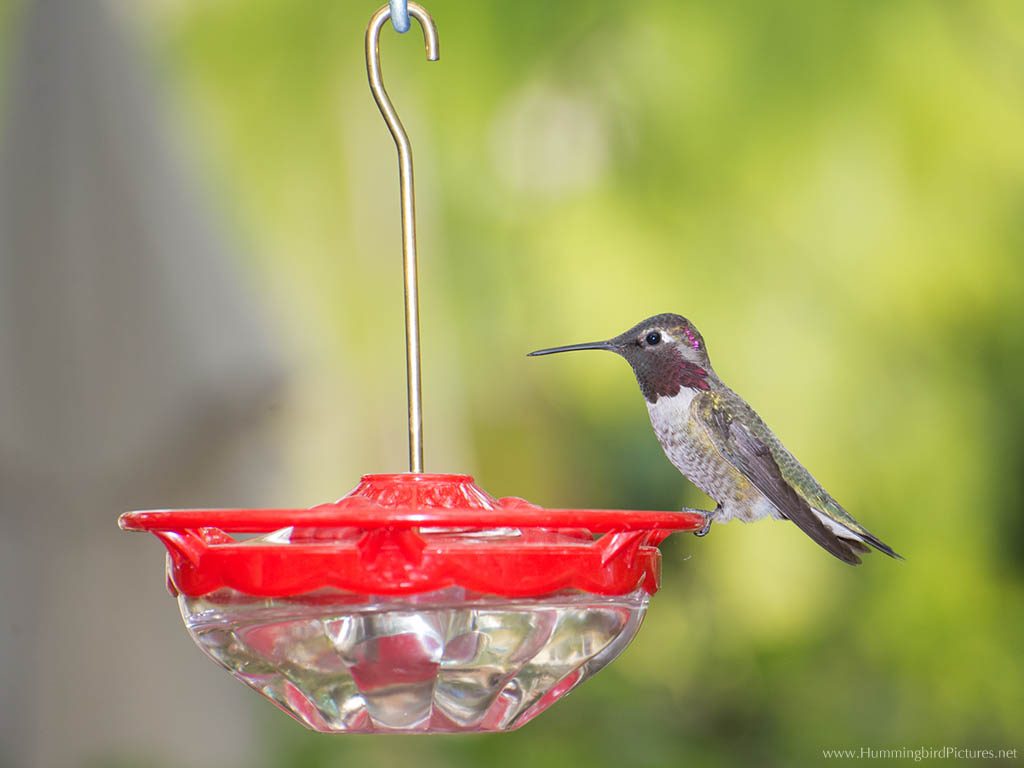
This hummingbird feeder is very easy to clean. We put ours in the top of the dishwasher. When it is clean, we give it several extra tap water rinses, then let it dry. We have two of this model. Often when one is out in the yard, the other is being washed.
More than one bird can feed at a time on this hummingbird feeder. Generally, we only see that when the new fledglings are out or during migration.
Bees, wasps, and other birds cannot get to the nectar in this model.
Larger Hummingbird Feeders
There are several models of larger hummingbird feeders that we use too. We put these out during migration or when we are away for a few days.
Dish Feeder
We use a dish feeder that is dishwasher safe. We do extra rinses with clean tap water after the dishwasher.
The feeder has a small ant moat. The water evaporates quickly but the feature is nice.
Dish feeders are fairly light and can blow in the wind. In very heavy rain, rainwater may get into the nectar through the ports. If that happens, we replace the feeder with another with fresh nectar.
Bottle Feeders
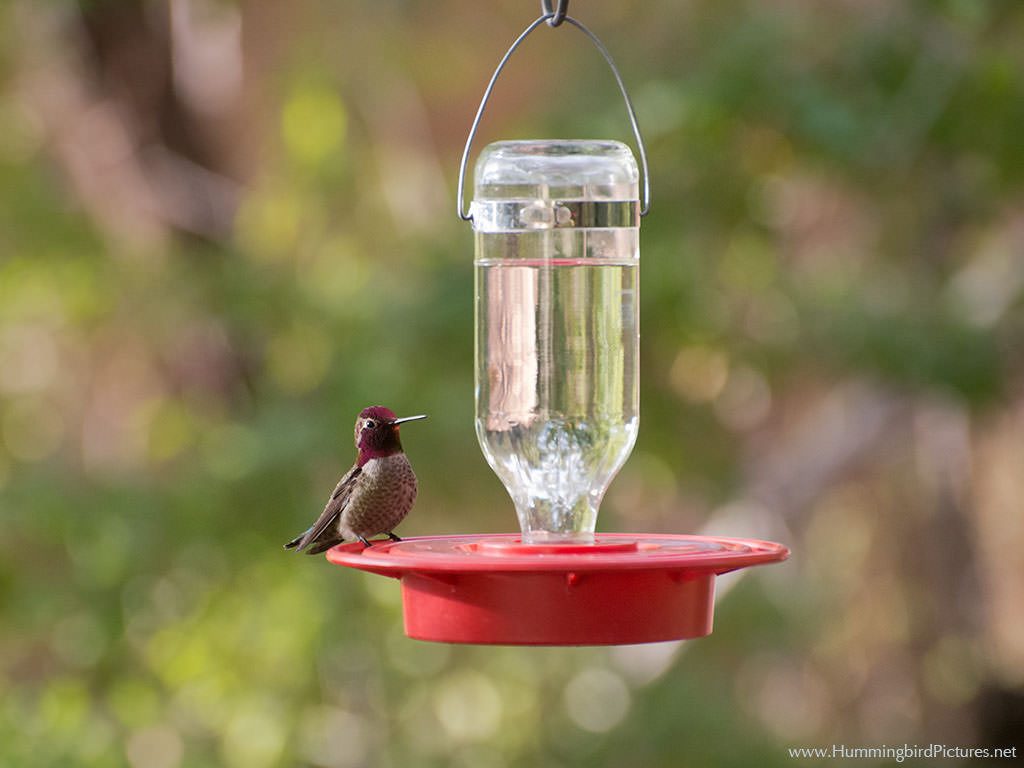
This glass bottle feeder has multiple ports. It is washed by hand.
It is a heavy, stable feeder. We use this during hummingbird migration. It is not perfect for viewing or photography. The birds often hide behind the bottle.
In very heavy rain, water may get into the nectar through the ports. If that happens, we change out the feeder for another with fresh nectar.
On occasion, all of the clean feeders are soaked in water with bleach, followed by a thorough rinse.
Extra Large Hummingbird Feeders
Extra large feeders are often used along hummingbird migration routes. We do not get enough hummingbirds to use one of these, but we visit many places that do.
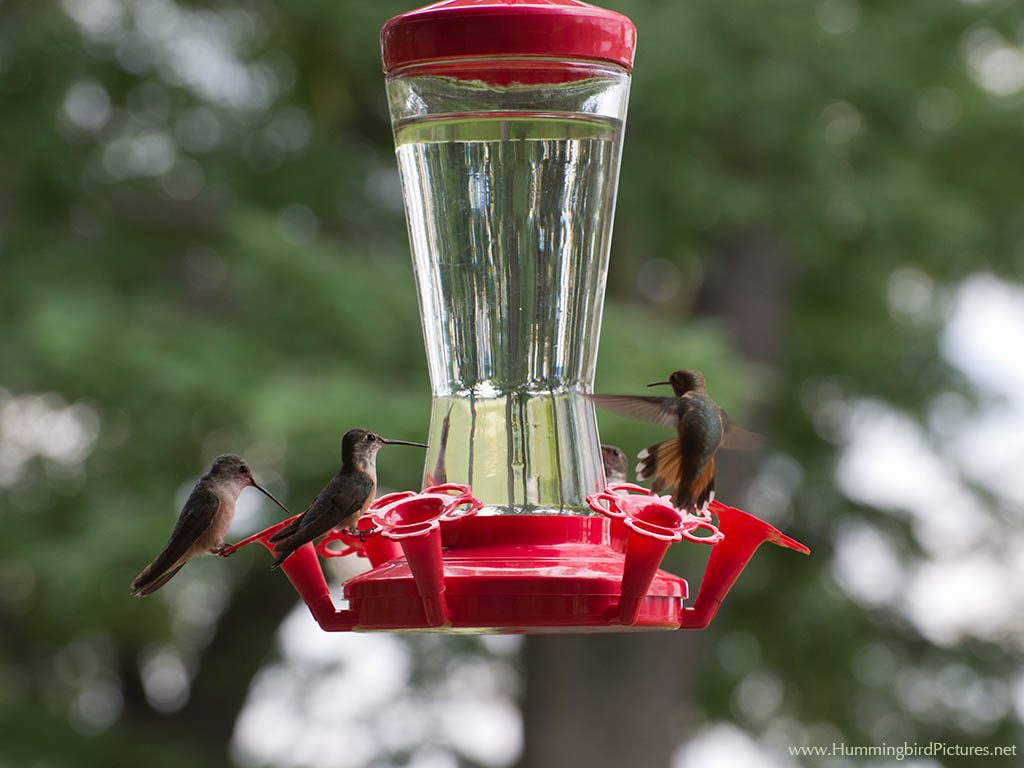
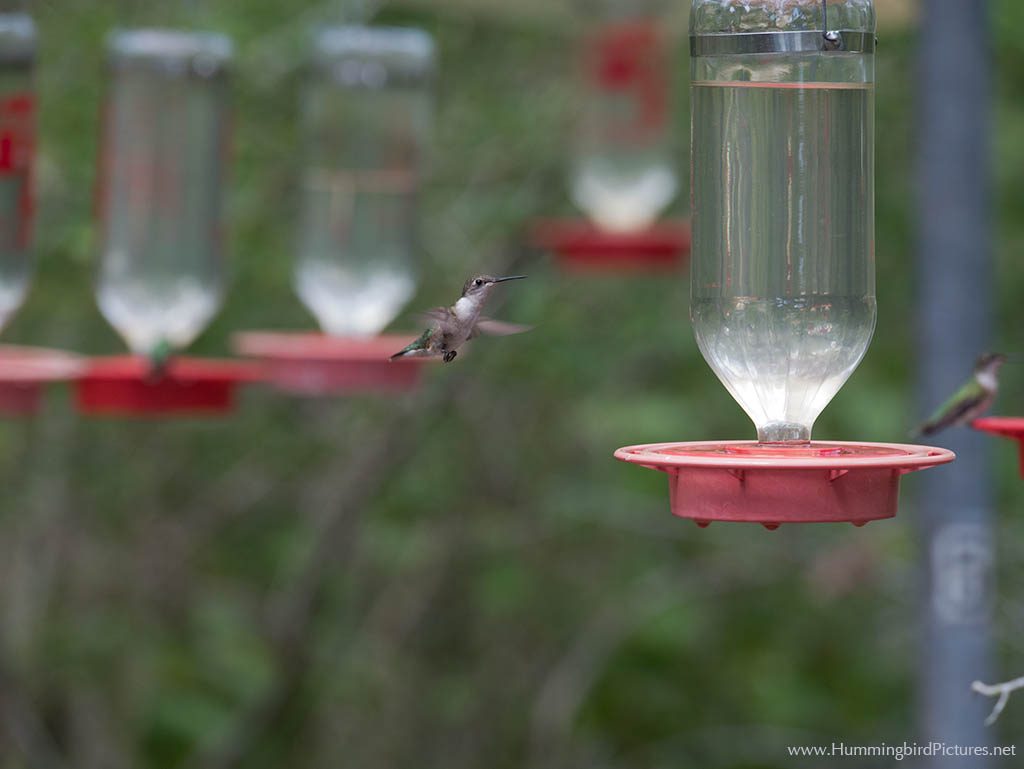
These look like a lot of work to manage. (Thank you to the people who manage these.)
Start Simple
Start with a single feeder and small brushes for cleaning it.
Create Your Own System
If you decide to put out more than one feeder, it helps to create a system.
For our system, we have a back-up feeder for each feeder placed in the yard. While one is out in the yard, a back-up feeder is being cleaned.
We particularly like the feeders that are fast to clean or that can be put in the dishwasher. We have a set of tiny port brushes, two kinds of bottle brushes for hand washing, and a small, dedicated drying rack.
Hummingbird nectar is made in a batch, cooled, and kept covered in the refrigerator.
Your system does not have to be elaborate.
In fact, we recommend starting simple. Learn as you go. Add or remove feeders over time.
Make it your own.
Go here for more about us or here for our interactive hummingbird ebook, Hover: Hummingbirds in the United States on iBooks.
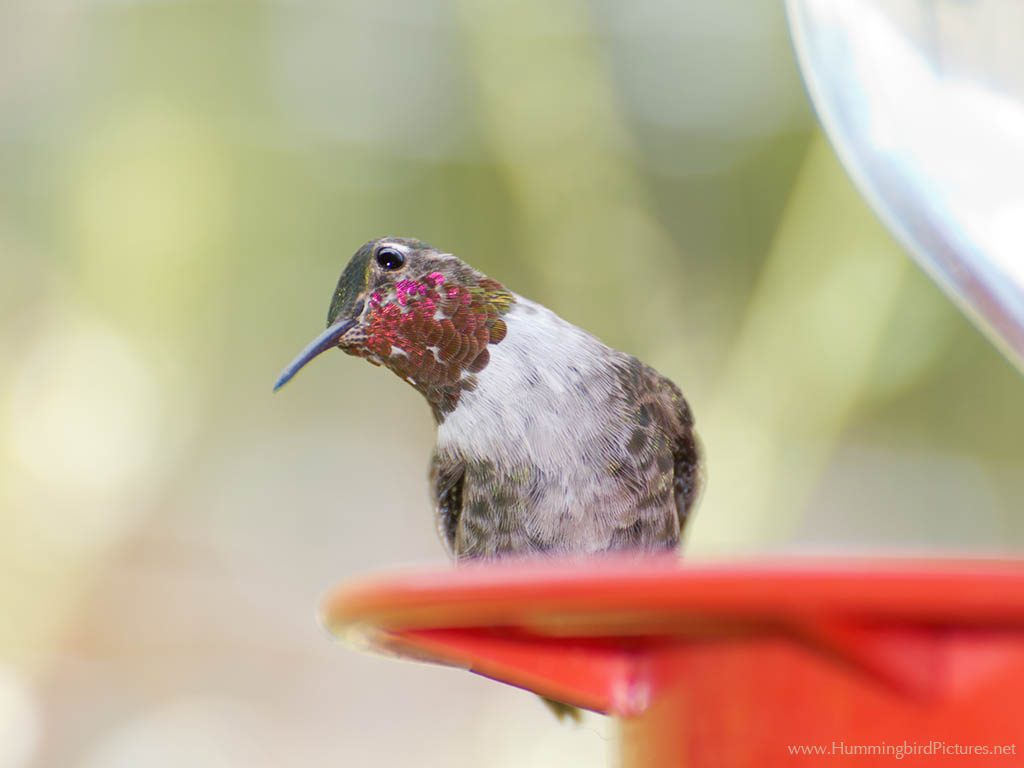
Note: we use affiliate links to support the site. If you purchase through the link, we may receive a small percentage. See our Privacy Policy. Thank you.